 - Pierre Marie en 1885, interne de
JM. Charcot à La
Salpêtrière (au
centre)
- © Extrait
de l'Album de l'internat de La
Salpêtrière conservé
à la Bibliothèque Charcot à
l'hôpital de la
Salpêtrière
- (Université
Pierre et Marie Curie,
Paris)
-
- Diplégie
faciale totale avec paralysie
glosso-laryngo-cervicale chez deux
frères Brissaud, Marie
1893
- Mouvements
involontaires dans les membres
paralysés
- Pierre Marie et André
Léri 1911
-
- Pierre Marie, the son of a wealthy bourgeois
family of Paris, received his first education at
a boarding school in Vanves. Complying with the
wish of his father, he first studied law, before
deciding to enter medicine. After completing
medical school, he was named Interne des
hôpitaux in 1878 and began his work in
neurology under the tutelage of Jean-Martin
Charcot at the Salpêtrière and
Bicêtre.
-
- Marie soon became one of Charcot's most
outstanding students and served as his
laboratory and clinic chief and special
assistant. He received his medical doctorate in
1883 with a classical dissertation on Basedow's
diseasase, carrying a graphic description of the
tremor observed in the extended arms and
fingers, a phenomenon he had begun to study
while a medical student. Promoted to
médecin des hôpitaux in Paris in
1888, he was apponted agrégé at
the Paris Faculty of Medicine in 1889. As part
of his work for this position, he presented to
the faculty a series of lectures, now famous, on
diseases of the spinal cord, which were
published in 1892.
-
- In 1897 he received a position with the
Hospice de Bicêtre, which had been founded
by Louis IX. Here he created a neurological
service that gained worldwide repute. In this
period he published extensively on aphasia, and
rejected the views of Pierre Paul Broca
(1824-1880) and Karl Wernicke (1848-1905) on the
localisation of the speech center. His document
on the subject was the basis of a devastating
critique on the previous work. He attacked the
ideas of Broca, using as the provocative title
for his paper "The third left frontal
convolution has no special role in the function
of language." Dissecting one of Broca's
specimens which had remained untouched, he
demonstrated that the lesion affected far more
than Broca's area. His three papers on aphasia
appeared in Semaine médicale in 1906.
They generated much discussion, and three
special sessions of the Société
française de neurologie de Paris convened
in 1908 to compare Marie's views on language
disorders, which differed from Broca's widely
accepted doctrine that aphasia is caused by a
lesion in the cerebral hemisphere's «speech
center.»
-
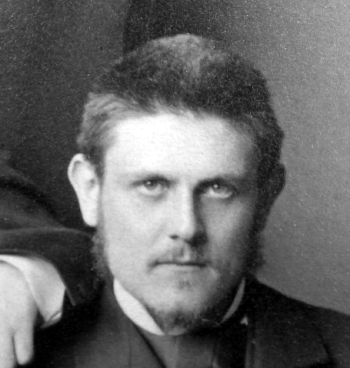 - en 1890, interne de JM.
Charcot
 - © Extrait
de l'Album de l'internat de La
Salpêtrière conservé
à la Bibliothèque Charcot à
l'hôpital de la
Salpêtrière
- (Université
Pierre et Marie Curie,
Paris)
-
- In 1907 he successfully applied for the
vacant chair of pathological anatomy at the
Faculty of Medicine, and during his ten years
there dedicated himself to that profession,
however, without adding much to the subject
itself. With the aid of Gustave Roussy, his
successor, Marie completely modernized the
teaching of pathological anatomy in medical
schools, and established laboratories and a
museum.
- In 1917, aged 64, Marie was appointed to the
chair of neurology which had been created for
Charcot and occupied since his tenure by
Fulgence Raymond (1844-1919), Édouard
Brissaud (1852-1909) and Joseph Jules Dejerine
(1849-1917). When Marie assumed the chair in
1918, toward the end of a destructive war, there
were no longer the facilities or the means to
continue the painstaking laboratory studies of
the Dejerine school, nor did Marie's interests
incline him in that direction. During the war,
Marie and his colleagues in «Charcot's
clinic» devoted most of their time to the
study and treatment of neurological traumas of
the wounded, but Marie's great productive period
was over.
- A brilliant clinician in the tradition of
Charcot, Marie was an outstanding, demanding
teacher. Between 1885 and 1910, the most
productive period of his career, he wrote
numerous articles and book and developed an
international school of neurology which was to
produce many distinguished pupils. He possessed
a keen intuition which was sharpened by a
rigorous approach to the study and practice of
neurology. Capable of making shrewd clinical
judgments, Marie successfully identified and
described a series of disorders with which his
name is linked.
-
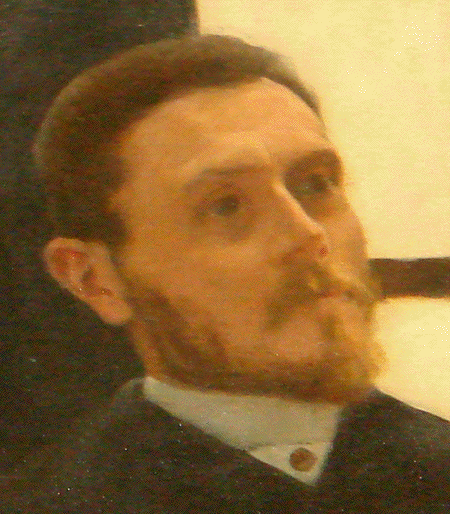 - extrait de
- Une
leçon de Charcot à La
Salpêtrière
- tableau de André
Brouillet 1887
-
- In one of his earliest and most significant
works (1886-1891), he provided the first
description and study of acromegaly. Marie's
analysis of the pituitary gland disorder was a
fundamental contribution to the nascent field of
endocrinology. He was also the first to define
muscular atrophy type Charcot-Marie (1886),
pulmonary hypertrophic osteoarthropathy (1890);
cerebellar heredotaxia (1893); cleidocranial
dyssostosis (1897); and rhizomelic spondylosis
(1898).
- Marie led a quiet, private life with his
wife and only child, André, who also
became a physician. He received few visitors and
avoided public appearances although he was
awarded numerous honors. His abiding interests
were art, the Revue neurologique, which he and
E. Brissaud founded in 1893, and the
Société Française de
Neurologie, which he served as its first general
secretary. He was a member of the
Académie de Médecine from
1911.
- Outside medicine his interests were in the
arts, fencing, and golf, and his life was happy
until his daughter Juliette died of
appendicitis. After resigning from his chair at
the Salpêtrière in 1925, aged
seventy two, he spent the winters at Côte
d'Azur and the summer at his estate in Normandy.
His life was shattered, however, by the death of
his wife from erysipelas and his only son from
botulism he had contracted during his
investigations at the Pasteur Institute. After
this he lived as a virtual recluse and was
increasingly troubled by ill health until his
death at the age of 86.
-
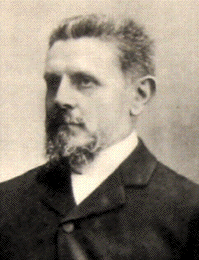  -
- Pierre Marie
devint interne à 25 ans, et connut
JM Charcot au sommet
de sa carrière. Il participa à la
description d'entités nouvellement
isolées comme l'atophie musculaire
progressive en 1886, l'acromégalie en
1886, l'ostéoartropathie hypertrophique
en 1890, l'hérédoataxie
cérébelleuse en 1893, la
spondylose ankylosante en 1898. Il obtint ainsi
une réputation internationale. En 1897,
il obtint la direction du service de
Bicêre où il explora en particulier
les différentes formes d'aphasie. En
1918, à 65 ans, il fut nommé
à la Chaire de Neurologie
créée par Charcot. En
collaboration avec C.
Foix, H. Meige et
d'autres, il publia différents travaux
consacrés aux séquelles
neurologiques de la guerre. Associé
à E. Brissaud
il avait fondé en 1893 la Revue
Neurologique.
-
-

 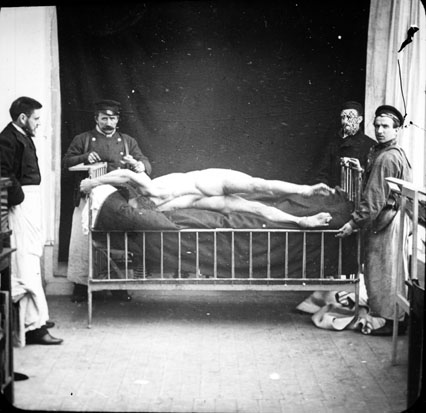 - A gauche, PierreMarie, interne,
observant une crise d'hystérie
mâle
-
- Bibliography:
- Des formes frustes de la maladie de Basedow.
Thèse de doctorat, Paris, 1883.
- Sclerose en plaques et maladies
infectieuses. 1884.
- Sur deux cas d'acromégalie.
1886.
- De la déviation faciale dans
l'hémiplégie
hystérique.
- Sur une form particulière d'atrophie
musculaire progressive; souvent familiale,
débutant par les pieds et les jambes et
atteignant tard les mains. With Jean Martin
Charcot. Rev Méd, Paris, 1886, 6: 97
- Hystérie dans l'intoxication par le
sulfure de carbone. 1888.
- Ostéoarthropathie hypertrophiante
pneumique. 1890.
- Essays on Acromegaly. With bibliography and
appendix of cases by other authors. London,
1891.
- Leçons sur les maladies de la
moëlle épinière. Paris, 1892.
Translated into German. English translation by
M. Lubbock: Lectures on Diseases of the Spinal
Cord. London, 1895.
- Sur l'hérédo-ataxie
cérébelleuse. Semaine
médicale, Paris, 1893, 13: 444.
- Leçons de clinique médicale.
Hôtel-Dieu, 1894-1895.
- Sur un syndrome clinique et urologique se
montrant dans le diabète
lévulosurique et
caractérisé par un état
mélancolique avec insomnie et
impuissance. With Robinson. 1897.
- L'évolution du langage
considéré au point de vue de
l'étude de l'Aphasie. 1897.
- Dysostose cléido-crânienne
héréditaire. Paul Sainton
(1868-1958). 1897.
- Spondylose rhizomélique. 1898.
- Pagetsche Knochenkrankheit. With
André Léri. In Handbuch der
Neurologie. Volume 4, Berlin,1913.
- Note sur un syndrome de paralysie flasque
plus ou moins généralisée
avec abolition des reflexes, hyperalbuminose
massive et xantochromie vers la guerison et de
nature indéterminée. Written with
C. Chatelin. Revue neurologique, 1916, 30:
564-565.
- Neurologie. 2 volumes; Paris, 1923.
- Travaux et mémoires. Paris, 1926 and
1928.
-
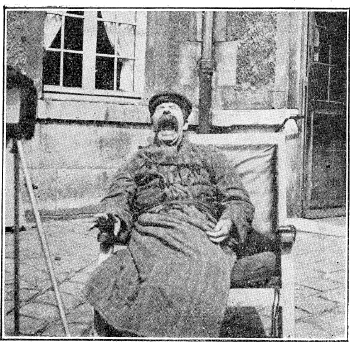 -
- Dans la collection des clichés de
Pierre Marie en 1921, ce patient pseudo bulbaire
au rire et pleurer spasmodique, parésie
des 4 membres, bouge les doigts droits lors de
son bâillement ( voir
la parakinésie brachiale oscitante
)!
-
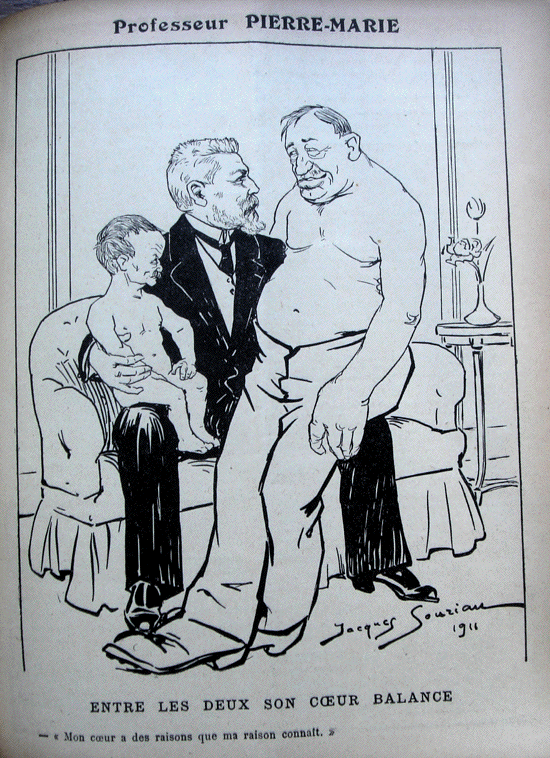 - Piere Marie a décrit
l'acromégalie
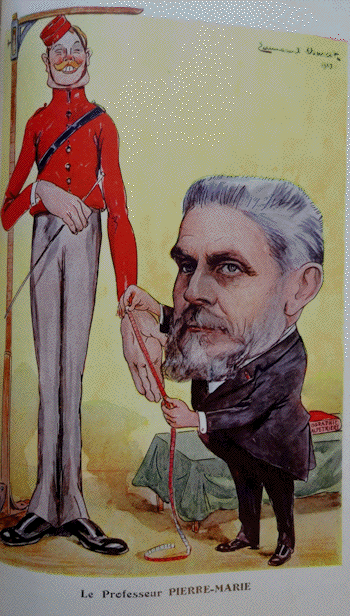 -
- Le diagnostic
des maladies nerveuses Sir J. Purves-Stewart
1939
-
- Abercrombie J,
Gendrin A Des maladies de l'encéphale
et de la moelle épinière
Germer-Baillière 1835
- Abercrombie
J Yawning and apoplexy Medical Times and
Gazette 1863;1:656-661
- Bauer G. et al
Involuntary motor phenomena in the locked in
syndrome J Neurology 1980;223;:91-198
- Bertolotti M.
Etude sur la pandiculation automatique des
hémiplégiques Rev Neurol
1905;2(19): 953-959
- Blin O, Rasol
O, Azulay JP, Serratrice G. A single report
of an hemiplegic arm stretching related to
yawning J Neuro Sci 1994;126:225-227
- Brissaud E,
Pinard, A, Reclus P Pratique
médico-chirurgicale
Hémiplégie par A Souques Masson
1907, p538-539
- Brissaud E
Leçons sur les maladies nerveuses Masson
1895, p458
- Darwin E.
Zoonomia 1801
- de
Buck Classification des mouvements anormaux
associés à
l'hémiplégie Rev Neurol
1899;6:361-365
- Furtado D.
Provocation spinale d'un réflexe de
bâillement. Rev d'oto neuro
ophtalmologie.1951;23(1):
- Ghika
J., Bogousslavsky J. Dissociated
preservation of automatic-voluntary jaw
movements in a patient with biopercular and
unilateral pontine infarcts Eur Neurol
2003;50:185-188
- Heusner A P
Yawning and associated phenomena Physiological
Review 1946;25:156-168
- Klippel M et
Monier-Vinard R. Hémiplégie
flaccide. Nouveau Traité de
Médecine. Masson. 1928 p 316
- Lanari A.,
Delbono O. The yawning and stretching sign
in hemiplegics Medicina (B Aires)
1983;43(3):355-35
- Liecey Nouvelle
observation de bâillement convulsif
périodique Le Courrier Médical
1879;29;334-336
- Liégey
Deux observations de bâillements
intermittents Gazette médicale de
Strasbourg 1851; p118-119
- Louwerse
E Forced yawning as a pseudobulbar sign in
amyotrophic lateral sclerosis J Neuroscience
Research 1998, sup, 392
- Mulley G.
Assoctiated reactions in the hemiplegic arm
Scand J Rehab Med 1982;14:117-120
- Ogle JW. Arm
rising during yawning The Medical Times and
Gazette. 28 february 1863 p 213
- Pierre Marie La
Pratique Neurologique Hémiplégie,
mouvements associés Masson 1911,
p477-480
- Pierre
Marie et Léri A. Mouvements
involontaires dans les membres paralysés
1911 Nouveau Traité de médecine et
de thérapeutique Brouardel, Gilbert,
Thoinot JB Baillière Ed 1911
p283-291
- Purves-Stewart
J. Le diagnostic des maladies nerveuses
1939
- Quoirin
E. Elévation involontaire du membre
supérieur chez
l'hémiplégique lors d'un
bâillement Thèse doctorat en
médecine Poitiers 2002
- Thomson HC
Associated movements in hemiplegia : their
origin and physiological significance Brain
1903;26:515-523
- Töpper
R, Mull M, Nacimento W Involuntary
stretching during yawning in patients with
pyramidal tract lesions: further evidence for
the existence of an independent emotional motor
system European J Neurology 2003;10:495-499
- Trautmann R.
Le bâillement Thèse Bordeaux;
1901-02; N° 40; 86 pages
- Vulpian A
Leçons sur la physiologie
générale et comparée du
système nerveux faites au Museum
d'histoire naturelle. Rédigées par
E.Brémond. Paris, Baillière,
1866
- Vulpian
A Maladies du système nerveux Paris,
Doin, 1879
- Walshe FMR
On certain tonic or postural reflexes in
hemiplegia with special reference to the so
called "associated movements". Brain,
1923;46:1-37
- Wimalaratna
HS, Capildeo R. Is yawning a brainstem
phenomenon ? a stroke patient who stretched his
hemiplegic arm during yawning Lancet
1988;1(8580):300
-
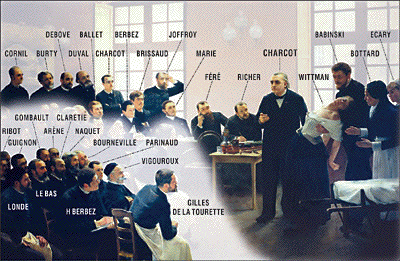
|













